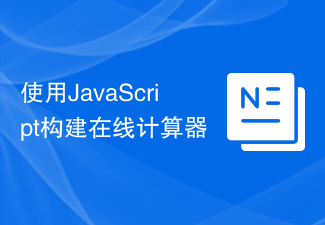 Backend Development
Backend Development PHP Tutorial
PHP Tutorial ubuntu14.04 LEMP (linux nginx mysql php5) build environment, _PHP tutorial
ubuntu14.04 LEMP (linux nginx mysql php5) build environment, _PHP tutorialubuntu14.04 LEMP(linux nginx mysql php5)构建环境,
Install LEMP (Linux, Nginx, MySQL and PHP) Stack on Ubuntu Linux 14.04 LTS
by VIVEK GITE on DECEMBER 2, 2014
 I'm a new Ubuntu Linux user. How do I install the LEMP stack on an Ubuntu Linux 14.04 LTS server using command line options to serve dynamic web apps?
I'm a new Ubuntu Linux user. How do I install the LEMP stack on an Ubuntu Linux 14.04 LTS server using command line options to serve dynamic web apps?
What is new in Ubuntu 14.04 (Trusty Tahr) version?
You may see it on cyberciti.biz or visit the Ubuntu home page at ubuntu.com.
Nginx Installation
Nginx is one of the robust web server in Linux world. Nginx is a free, open source, high performance HTTP server and reverse proxy, as weell as an IMAP/POP3 proxy server. Now, we are going to install Nginx web server.
First, make sure system is upto date:
$ sudo apt-get update
#1 - Download and Install Nginx
The easiest way to download and install Nginx is using apt-get command. Here is the command:
$ sudo apt-get install nginx
Fig.01: Download and Install Nginx on Ubuntu Linux
#2 - Test Nginx
Once it get done, you can open your browser and type url http://localhost or http://your_ip_address to test it. If everything goes normal, you will see Nginx welcome page:
Fig.02: Welcome nginx page on Ubuntu Linux
MySQL Installation On Ubuntu
MySQL is one of the most powerful database management system in Linux world. Next, we are going to install it with PHP support.
#1 - Install MySQL and PHP support
Type the following command:
$ sudo apt-get install mysql-server php5-mysql
Fig.03: Ubuntu Linux Install MySQL to Manage Site Data with PHP
#2 - Test MySQL
Once mysql installation finished, we can test it. Open your console and type the following command:
$ mysql -u root -p
Fig.04: Ubuntu test Mysql installation
#3 - Securing access to MySQL
If we are going to use MySQL as a production database, we may want to secure it. MySQL provides a shell script to help us securing it. Just type the following command on your console:
$ sudo mysql_secure_installation
1. Enter your root password
Enter your current root password to continue to the next step.
Fig.05: MySQL enter your root db password
2.Change the root password
If you want to change it, press Y. Otherwise, press N.
Fig.06: MySQL security
3.Remove anonymous user
It is recommended to remove anonymous user to mitigate risk who can log in into your database.
Fig.07: MySQL security
4.Disallow root login remotely
To make sure that no one remote your database as root from another machines, we need to disallow root login remotely.
Fig.08: MySQL security
5.Remove test database
Sometimes some MySQL installation will create a database named ëtestí for testing purpose. We can remove it if we donít use it.
Fig.09: MySQL security
6.Reload privilege tables
Then we need to reloading the privilege tables to ensure all changes made so far will take effect immediately.
Fig.10: MySQL security
7.Done
 Fig.11: MySQL security
Fig.11: MySQL security
PHP Installation For Server Side Scripting
Since PHP is popular, a lot of websites is built using PHP language. As of January 2013, PHP was installed on more than 240 millions websites. Now we are going to install PHP on Ubuntu 14.04
#1 - Download and install PHP
As usual, we can download and install PHP using apt-get command. Just type the following command on your Ubuntu console or over the ssh based session:
$ sudo apt-get install php5-fpm
Fig.12: Install PHP for Server Side Processing on Ubuntu
Configure Nginx to work with PHP and MySQL Server on Ubuntu
Now we have all components installed. The next step is we need to configure Nginx with PHP and MySQL. Let's start to configure them.
#1 - Configure PHP5-FPM
PHP5-FPM configuration file is located at /etc/php5/fpm/php.ini. Open it with your text editor
$ sudo vi /etc/php5/fpm/php.ini
cgi.fix_pathinfo=1
cgi.fix_pathinfo=0
$ sudo service php5-fpm restart
#2 - Configure Nginx
Nginx configuration file is located at /etc/nginx/nginx.conf. But basically, we don't need to touch it. The configuration of nginx website is located in /etc/nginx/sites-available/default file.
location ~ .php$ {
fastcgi_split_path_info ^(. .php)(/. )$;
# # NOTE: You should have "cgi.fix_pathinfo = 0;" in php.ini
#
# # With php5-cgi alone:
# fastcgi_pass 127.0.0.1:9000;
# # With php5-fpm:
fastcgi_pass unix:/var/run/php5-fpm.sock;
fastcgi_index index.php;
include fastcgi_params;
}
Then restart the services.
$ sudo service nginx restart
$ tail /var/log/nginx/error.log
fastcgi_pass unix:/var/run/php5-fpm.sock
location ~ .php$ {
#3 - Configure MySQL
After the configuration section is done, now we need to test them to make sure that our configuration is working as required. On Ubuntu 14.04 the root document folder is located in /usr/share/nginx/html. So create a file called /usr/share/nginx/html/phpinfo.php with the following code:
[php] view plaincopyAfter restarting PHP-FPM and Nginx, open the browser and browse to the php file, we got only a blank screen. No error message on the screen. No error message on PHP-FPM and Nginx log file.
And then open the browser again and type url http://your_ip_address/phpinfo.php
To enable short php tag, we need to change the value of short_open_tag parameter on php.ini file:
sudo service php5-fpm restart
Then try again to test your phpinfo file. Next, we will see if the MySQL support is enabled or not. Scroll down the php configuration screen on your browser, if you see MySQL block there, then MySQL support already enabled.

You are now ready to use Nginx, PHP5 and MySQL on Ubuntu server. I hope this quick article help anyone who wish to install Linux, Nginx, PHP and MySQL on Ubuntu 14.04.
 VUE3入门教程:使用Webpack进行打包和构建Jun 15, 2023 pm 06:17 PM
VUE3入门教程:使用Webpack进行打包和构建Jun 15, 2023 pm 06:17 PMVue是一款优秀的JavaScript框架,它可以帮助我们快速构建交互性强、高效性好的Web应用程序。Vue3是Vue的最新版本,它引入了很多新的特性和功能。Webpack是目前最流行的JavaScript模块打包器和构建工具之一,它可以帮助我们管理项目中的各种资源。本文就为大家介绍如何使用Webpack打包和构建Vue3应用程序。1.安装Webpack
 使用CMake构建Linux内核的配置指南Jul 06, 2023 pm 02:46 PM
使用CMake构建Linux内核的配置指南Jul 06, 2023 pm 02:46 PM使用CMake构建Linux内核的配置指南概述在Linux开发中,构建和配置内核是一个重要的环节。对于大多数人来说,使用Kconfig和Makefile是最常见的配置方式。然而,使用CMake来构建和配置Linux内核也是一个灵活且强大的选择。本文将介绍如何使用CMake来构建和配置Linux内核,并附上一些代码示例。安装CMake首先,我们需要安装CMak
 如何使用Golang构建Web应用程序Jun 24, 2023 pm 02:46 PM
如何使用Golang构建Web应用程序Jun 24, 2023 pm 02:46 PM在当前的互联网时代,Web应用程序已成为了人们日常生活中不可或缺的一部分,而且在各种应用场景下都有广泛的应用。无论是电商网站、社交媒体、在线教育平台,还是各种SaaS应用程序,都离不开Web应用程序。随着技术的不断更新迭代,Golang越来越受到Web应用程序开发者的喜爱,下面我们就快速了解如何使用Golang构建Web应用程序。一、为什么使用Golang?
 CakePHP中间件:快速构建可扩展的Web应用程序Jul 28, 2023 am 11:33 AM
CakePHP中间件:快速构建可扩展的Web应用程序Jul 28, 2023 am 11:33 AMCakePHP中间件:快速构建可扩展的Web应用程序概述:CakePHP是一个流行的PHP框架,被广泛应用于Web应用程序的开发。其提供了许多功能强大的工具和功能,其中包括中间件。中间件可以帮助我们快速构建和扩展Web应用程序,提高代码的可读性和可维护性。什么是中间件:中间件是在请求被派发给控制器之前或之后执行的一系列操作。它们可以完成许多任务,如身份验证、
 如何使用PHP构建智能医疗系统Jun 11, 2023 pm 05:32 PM
如何使用PHP构建智能医疗系统Jun 11, 2023 pm 05:32 PM在当今科技迅猛发展的时代,智慧医疗逐渐成为医疗行业的新趋势,而医疗健康的数据化和智能化,更是将如何使用PHP构建智能医疗系统变得尤为重要。本文将介绍PHP如何应用于医疗系统的开发,并结合实例详细探讨。一、智能医疗系统的功能特点首先了解智能医疗系统的主要功能特点,有助于我们更加清晰的构建医疗系统。智能医疗系统的主要特点包括:1、大数据分析预测功能:通过对医学数
 使用JavaScript构建在线计算器Aug 09, 2023 pm 03:46 PM
使用JavaScript构建在线计算器Aug 09, 2023 pm 03:46 PM使用JavaScript构建在线计算器随着互联网的发展,越来越多的工具和应用开始以在线形式出现。其中,计算器是一类被广泛使用的工具之一。本文将介绍如何使用JavaScript构建一个简单的在线计算器,并提供代码示例。在开始之前,我们需要了解一些基本的HTML和CSS知识。计算器的界面可以使用HTML的表格元素来构建,然后用CSS进行样式设计。以下是一个基本的
 在PHP中构建物业管理系统Jun 11, 2023 am 10:34 AM
在PHP中构建物业管理系统Jun 11, 2023 am 10:34 AM随着城市化进程的不断加快和人民生活水平的不断提高,物业管理行业也逐渐成为一个重要的领域。目前,物业管理系统已经成为了物业公司必备的工具,它可以帮助物业公司提高管理效率,优化服务质量,提升客户满意度。本文将介绍在PHP中构建物业管理系统的相关知识。一、物业管理系统的基本功能1.物业收费管理物业收费管理是物业管理系统的核心功能之一,它涉及到物业管理公司对于物业费
 基于Swoole构建实时股票交易系统Aug 08, 2023 am 09:01 AM
基于Swoole构建实时股票交易系统Aug 08, 2023 am 09:01 AM基于Swoole构建实时股票交易系统随着互联网技术的发展,股票交易成为了越来越多个人投资者和机构投资者的选择。为了更好地满足投资者的需求,提供更实时、高效的股票交易服务,我们可以借助Swoole这个高性能的PHP扩展来构建一个实时股票交易系统。Swoole是一个基于C语言扩展开发的PHP网络通信框架,它提供了异步、并发、高性能的网络编程特性。使用Swoole


Hot AI Tools

Undresser.AI Undress
AI-powered app for creating realistic nude photos

AI Clothes Remover
Online AI tool for removing clothes from photos.

Undress AI Tool
Undress images for free

Clothoff.io
AI clothes remover

AI Hentai Generator
Generate AI Hentai for free.

Hot Article

Hot Tools

VSCode Windows 64-bit Download
A free and powerful IDE editor launched by Microsoft

PhpStorm Mac version
The latest (2018.2.1) professional PHP integrated development tool

DVWA
Damn Vulnerable Web App (DVWA) is a PHP/MySQL web application that is very vulnerable. Its main goals are to be an aid for security professionals to test their skills and tools in a legal environment, to help web developers better understand the process of securing web applications, and to help teachers/students teach/learn in a classroom environment Web application security. The goal of DVWA is to practice some of the most common web vulnerabilities through a simple and straightforward interface, with varying degrees of difficulty. Please note that this software

Zend Studio 13.0.1
Powerful PHP integrated development environment

EditPlus Chinese cracked version
Small size, syntax highlighting, does not support code prompt function






